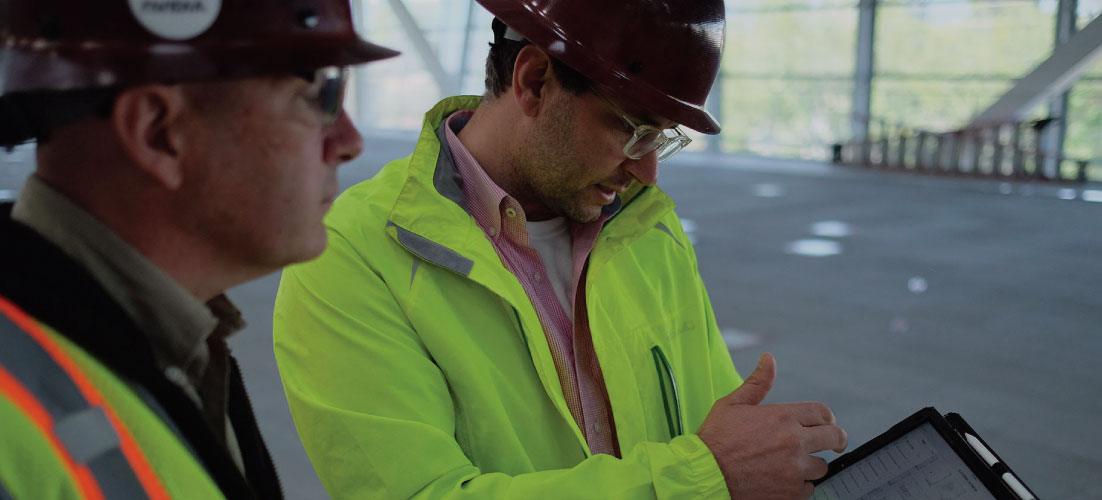
PUBLISHED
May 29, 2018
WRITTEN BY
Ryan LeClaire
Does your safety leader need to be a safety guru? Not necessarily.
In the first stage of the Journey to a High Participation Safety Culture, the CEO commits to safety; completely and publicly. In this second stage, the CEO empowers a safety leader to see the vision through to fruition.
Along with a committed CEO, we found that every High Participation Safety Culture we studied universally had a strong safety leader in place. This is another must-have.
But, how do you find this leader? What will they need to succeed?
The Rise of the Safety Leader
In a bad culture, the head of safety is a “safety cop.” They’re the ones reminding people to wear PPE, handing out warnings for infractions, or leading (largely ignored) training with safety tips and updates.
But in the safest companies in the world, the safety leaders are evangelists for safety – inspiring others to the benefits and heightening their awareness to the risks. They are responsible for communicating safety upstream and downstream; ensuring safety is top-of-mind in everyone from executives to electricians.
Empowering the Safety Leader
After the CEO makes the decision to embrace safety, they choose a leader. If such a leader exists in the organization, they are promoted. If not, they are recruited.
The CEO gives this leader the power to make meaningful changes at every level of the company. That power doesn’t come from more budget or more resources.
A leader’s power first comes from a public endorsement, as the CEO publicly makes them the “face” of the new safety culture. The CEO puts their faith in the leader, while they put their reputation on the line.
More importantly, the leader is given a seat at the executive decision-making table, right next to the leaders from sales, marketing and operations.
Choosing a Safety Leader
Don’t assume your safety leader needs a strong background in safety. That’s not always the case. You don’t need a safety expert, you need a change-agent.
Having a legislative background in safety doesn’t necessarily make someone successful in this role. It’s a nice-to-have, not a must-have. In some instances, it might actually be a hindrance. A safety veteran may be so focused on what they’ve learned from a legislative perspective, they can’t step back and see what you are trying to do as an organization to reduce risk.
The Characteristics of a Strong Safety Leader
First and foremost, your safety leader needs to be able to effectively communicate with the C-level of the company. They can make the business case for the ROI of safety and get buy-in from the highest level.
They also need to know how to lead organizational change. If you’re looking to promote from within, someone with credibility in leading change could be better for this role than an established safety expert.
Maybe you had a struggling division and brought in this person to turn it around. Their success in that role certainly qualifies them for this one; even if they have no safety background whatsoever. They proved they are an A-player and have the skill set to evaluate the workflow of a department.
The new initiatives will likely require new tools. Your safety leader needs to be able to lead a large procurement operation. This means they will:
- Select the right technology/ vendor
- Build the business case for the investment
- Pitch any stakeholders that need to be brought on board
- Secure the funding and resources
After that, they also need to oversee the roll-out and integration of the new tools to ensure high adoption and participation rates.
As you can see, a knowledge of safety is only one part of the role. It’s easier to hire someone with a change management background and train them in safety than it is to go the other way around.
They’re not the ones out there in the field reminding employees to wear their PPE. They’re the ones who create a High Participation Safety Culture where employees instinctively wear their PPE without ever needing to be reminded again.
That’s the second phase. If you would like to read the entire journey, download our whitepaper, Building a High Participation Safety Culture.
Rethinking Safety
Drive employee engagement by connecting
your frontline to your boardroom.
Find Out How eCompliance Helped Zip Signs Achieve COR Certification.
READ CASE STUDY →